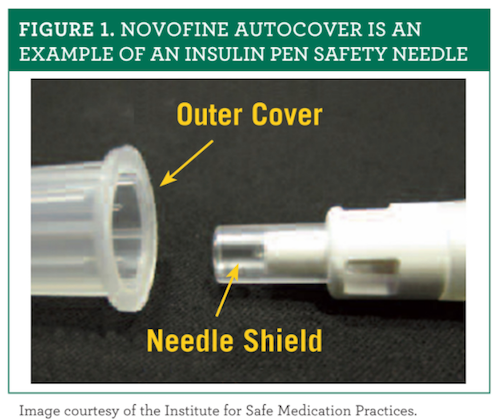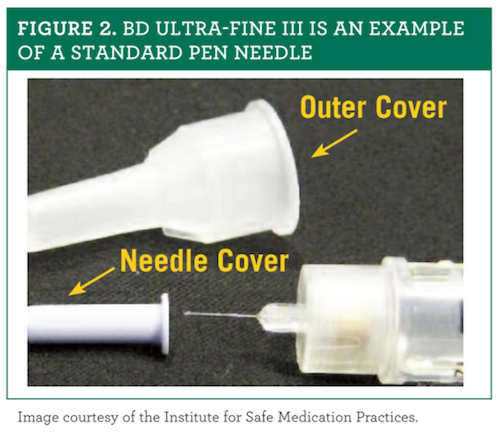Publication
Article
Pharmacy Times
Making Sure Patients Can Distinguish Needle Systems
Author(s):
Those who teach patients with diabetes about insulin must be aware of an unusual situation that can happen when using insulin pens with automatic needle retraction devices.
Those who teach patients with diabetes about insulin must be aware of an unusual situation that can happen when using insulin pens with automatic needle retraction devices (eg, NovoFine Autocover and BD AutoShield Duo). With these needle systems (Figure 1), the user holds the outer cover of the needle system while it is screwed onto the insulin pen. The outer cover is then removed, exposing a plastic needle shield that covers the needle. As the device is pressed against the skin, the needle shield slides back, allowing the skin to be punctured, and the insulin is injected once the button is pressed. After the injection is complete, the shield slides back over the needle as it is removed from the skin and locks in place so that the needle cannot be used again. It is a safety needle.

The automatic safety needle is quite different from standard insulin pen needles that patients typically purchase at a pharmacy. Insulin pen needles for home use are usually not safety needles and do not use an automatic needle shield. However, these 2 needle systems can look similar and patients may not recognize the difference. Both the automatic safety needle and standard needle systems have an outer cover that, when removed, exposes either a retractable needle shield (Figure 1) or an inner needle cover (Figure 2). The automatic needle shield is not intended to be removed prior to injection, but the inner needle cover on the standard needle must be removed before the injection to allow administration of insulin.

In the latest case reported to the Institute for Safe Medication Practices (ISMP), a recently hospitalized patient with type 1 diabetes did not know to remove the standard needle cover from the standard insulin pen needle prior to administration. She was unaware that she was using the pen incorrectly and, thus, had not been receiving any of her insulin doses. The patient developed diabetic ketoacidosis and later died.
Patients who use safety needles in the hospital and are then switched to standard pen needles at home must be advised that there are 2 types of needle systems for pens. If they are using standard needles, they need to know to remove both caps. One hospital that reported an event to ISMP has changed to nonsafety needles when training patients to make sure they know how to administer insulin with the pen and needle that they will use at home. All hospitals should verify upon discharge which needle the patient will be using and tailor the training whenever possible.
Community pharmacies should establish a system to ensure that patients receive counseling when picking up new prescriptions and refills for insulin pen and pen needle products (eg, an electronic stop in the sales register that requires intervention and acknowl- edgment by a pharmacist). The pharmacist should use a teach-back method to verify that the patient understands the appropriate administration technique.
If blood glucose levels are elevated after injection, the patient should be reminded to consult a diabetes educator, pharmacist, or physician, who should review injection technique with the patient. Patients should question their health care professional if the insulin pen needle is not what they expect.
Michael J. Gaunt, PharmD, is a medication safety analyst and the editor of ISMP Medication Safety Alert! Community/ Ambulatory Care Edition.







